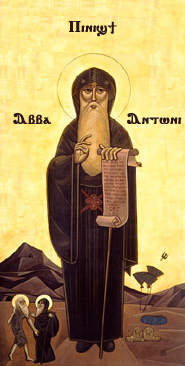
Brotherhoods (Ukrainian: братство; literally, "fraternities") were non-monastic organisations of Eastern Orthodox and Greek Catholic citizens or lay brothers affiliated with individual autocephalous churches. Some of their focus was of an evangelical or theological character, but much of their activities were in fact secular. Their structure resembled that of medieval confraternities and trade guilds, and can be characterized as the Orthodox equivalent of Catholic religious orders. Beginning in the western Ukrainian lands, they became common in the cities throughout the Ruthenian part of the Polish–Lithuanian Commonwealth such as Lviv, Vilnius, Lutsk, Vitebsk, Minsk, and Kyiv.
In Slavonic churches
The first documented Orthodox brotherhood was that of Lviv, in 1463. They were consolidated in the aftermath of the Union of Brest (1596) in order to oppose the conversion of Orthodox Christians to the Uniate Church, the Counter-Reformation, and Polonization. The brotherhoods attempted to resist state-supported Catholic missionary activity by publishing books in the Cyrillic script and by financing a network of Orthodox schools which offered education in both Old Church Slavonic and the vernacular Ruthenian language.
The brotherhoods were also simultaneously engaged in defending the rights and liberties of the Orthodox burghers, particularly of those Ukrainian craftsmen and merchants from the arbitrary oppression of the Polish Catholic authorities.
The famous Kyiv Mohyla Academy grew out of one such school under the umbrella of the Brotherhood Monastery in Kyiv. The Dormition Church, Lviv was financed by the brotherhood of the same name; its members also supported the Cossack risings in the east of Ukraine. The powerful Ostrogski family provided political support for their activities.
The activity of the Orthodox fraternities helped preserve the national culture of Ukraine and Belarus throughout the Counter-Reformation era. Most were closed in the course of the 18th century when Greek-Catholic proselytism had been forbidden by the House of Romanov. Some were revived in the late 19th century in order to stem "atheist propaganda" of the Nihilists.
The 19th century Brotherhood of Saints Cyril and Methodius, formed in the Russian Empire, was barely religious at all in character, and instead promoted Ukrainian national awareness.
The Ostroh bratstvo was reinstituted by Countess Bludova (1813-1891), an ardent admirer of the Ostrogski family. Orthodox immigrants to the U.S. formed brotherhoods to support church activities.
Notable Orthodox Brotherhoods
- Army of the Lord
- God-Prayer Congregation
- Brotherhood of Theologians for life (also known as "Zoe")
- The Soter brotherhood
- Brotherhood of St. Symeon the New Theologian
- Saint Paisios Brotherhood
- Nour al-Masih society
See also
- History of Christianity in Ukraine
- Confraternity
- Lviv Dormition Brotherhood
- Brotherhood of Saints Cyril and Methodius
- Ostroh Academy
- Ostroh Bible
References
- ^ "Brotherhoods" at the Encyclopedia of Ukraine.
- Basil Jioultsis. "Religious Brotherhoods: A Sociological View". Social Compass, XXII, 1975/1, pp. 67–83.
- ^ Plokhy, Serhii (2001). The Cossacks and Religion in Early Modern Ukraine. Oxford University Press. pp. 70–71.
- Magocsi, Paul Robert (2007). Ukraine: An Illustrated History. University of Toronto Press. p. 113.
- ^ Russian Humanitarian Encyclopaedia
- Orest Subtelny. Ukraine: A History. 3rd ed. University of Toronto Press, 2000. Pages 97-99.
- "Light of Christ - "Nour Almasih"". www.lightchrist.org. Retrieved 2023-09-10.
External links
This Eastern Orthodox Christianity–related article is a stub. You can help Misplaced Pages by expanding it. |
- Anti-Catholicism in Eastern Orthodoxy
- Eastern Orthodoxy in Ukraine
- Eastern Orthodoxy in Belarus
- 16th-century Eastern Orthodoxy
- Ruthenians in the Polish–Lithuanian Commonwealth
- History of Christianity in Ukraine
- Confraternities
- Eastern Orthodox lay societies
- Brotherhood (Orthodox lay societies)
- Eastern Orthodoxy stubs